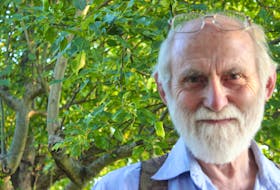When news popped up in my Facebook feed Jan. 16 that Katimavik is coming back, my heart skipped a beat.
I was ecstatic. At times, it seems like yesterday I proudly wore the patch with the Katimavik logo on my backpack. It wasn’t yesterday, though. I got my welcome letter in late August of 1999.
Aethne,
The date of your departure for the Katimavik project is coming nearer and I imagine you have already started preparing yourself! You must have several questions regarding the places where you will be living for the next seven months, as well as the work projects in which you will be taking part. Here is some useful information:
Your group number is 21031 and you still start your programme on September 15, 1999 in Ste-Irène, QC. On December 1, your group will move to Courtenay, BC. Your last rotation will take place in Ancaster, ON on February 9. Your programme will officially end on April 12, 2000.
Before I continue, though, maybe you’re asking yourself what Katimavik is. That’s a good question. To begin, the word “originates from the Inuktitut language, meaning ‘meeting place.’”
The program began 1977 and “offers young adults opportunities to gain life skills and work experience while contributing to community development through volunteerism.” Pierre Trudeau’s government started the program.
In 2012, Katimavik’s federal funding was cut, eliminating the program as it had existed since its inception.
Then, a press release came out Jan. 16, announcing the “Honourable Patty Hajdu, Minister of Employment, Workforce Development and Labour, announced the government’s new Canada Service Corps, which includes funding to restore Katimavik’s national community-based youth development experience.”
When I was the in the program, 11 young adults from across Canada lived together with a project leader. Over seven months, we were stationed in three communities across the country in which we volunteered with organizations and businesses. Our volunteering was like full-time work, Monday to Friday, approximately six or seven hours a day. On weekends and weeknights, we would plan activities and projects to do as a group.
Another big component of the program was house management. While nine of us were at work, two participants were house managers. Their job was to clean, prepare a food budget, go grocery shopping and cook. Everything was made from scratch.
There was also a second language element. One of the communities we lived in was French, and three of our group members were French Canadian. By the time April rolled around, we all spoke our second languages relatively comfortably. We weren’t necessarily fluent, but we encouraged each other and weren’t afraid to try.
Even if the latest Katimavik doesn’t resemble exactly what it did in 1977 or even 1999, many communities across the country should applaud the fact they’ll soon have groups of hard-working young adults engaging with people in the community. If you live in a place that ends up being lucky enough to host a Katimavik group, go say hello and offer what you can. Maybe you have a skill to teach or a project that needs volunteers.
As cliché as it may sound, I left Katimavik with lifelong friends, a passion for volunteering and an understanding of how important volunteerism is for sustainable communities.
Go online: To find out more about Katimavik, visit https://katimavik.org/en/.
Return of Katimavik great news
Reporter remembers personal experience with program
STORY CONTINUES BELOW THESE SALTWIRE VIDEOS








